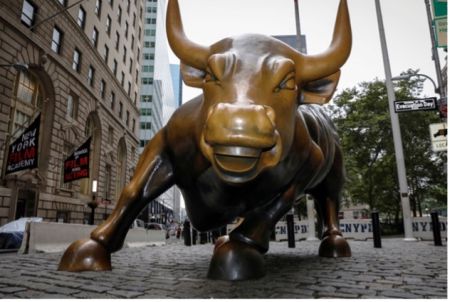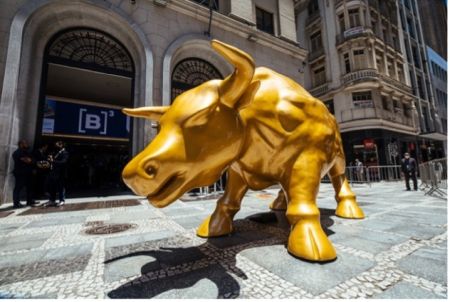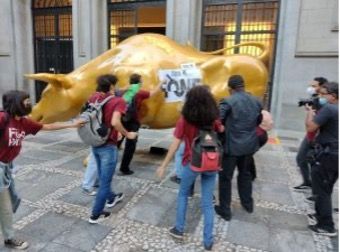Over the past few months of 2021, Brazilian news were almost all about the new sculpture at São Paulo's downtown: a metallic bull made by a partnership of plastic artist Rafael Brancatelli and the economist and digital influencer Pablo Spyer, founder of the Brazilian company "Vai Tourinho" ("Go Little Bull") with the financial support of Brazilian Stock Exchange ("B3").
After only one week in exhibition, the sculpture was taken from the street by São Paulo's city council, under the argument that the monument violated the city laws regarding publicity on the streets since the bull reminds the logo of Spyer's company and could lead the public to think that the art was publicity aimed to promote the company's business.
Nevertheless, before further explaining this matter, two additional issues have emerged with the bull: (i) the bull copyrights, which is extremely like the one on Wall Street, in New York, and (ii) the protests organized by Brazilian activists that tried to call out on several social issues such as the high prices on food and basic hygiene products due to the economic crisis facing the country.
Regarding the bull copyrights, it is important to contextualize the situation. The bull sculpture - and its connection to the financial market - made its first appearance in New York, in 1897, after the market crash. The "Charging Bull", which was how the sculpture was named after, was illegally put in front of New York Stock Exchange, by its creator, Italian artist Arturo Di Modica. Di Modica's main purpose was to represent the "strength and power of the people".
More than a century later, the sculpture still stands in front of the Stock Exchange building and has become a symbol of strength and optimism for investors. This metaphor arose from the term "Bull Market", which translates to the rise of the financial market.
Based on the above, several debates emerged that the sculpture placed in front of B3 was a copy of the sculpture in New York.
According to the Brazilian Stock Exchange, the sculpture was a gift from Rafael, the artist behind the work, and his idea was not conceived in relation to the American Bull. As claimed by the artist and the directors of B3, it is a way to honor the development of the Brazilian Capital Market and the animal represents strength and resilience.
Thus, what could be just a re-reading of the work may in fact be a copyright violation. The reason is that, according to BBC News1, the family of the Italian artist was not consulted on the matter.

American Bull

Brazilian Bull
Besides the Copyright issue, right after the sculpture's debut in the streets of São Paulo, several activists from Brazilian organizations visited the sculpture in order to make interventions and protests. As stated, there is a concentration of wealth in Brazil, while workers from the lower social strata of society have their work made precarious, besides being struggling with fundamental issues such as the price of food and basic hygiene products2

Following these two topics, the reason why the Bull was removed was the violation of São Paulo's Law No. 14,223, dated September 26, 2006.
At the time, the Law was created to ban billboards that advertised companies and their products. Ads identifying the activities developed in the buildings also started to have stricter approval rules.
Nowadays, the scope of the Law covers, in general, the permanence of advertisements and publicity in the urban landscape, in the most diverse types of buildings.
Thus, when there is an intention to promote or install an advertisement of this kind, approval by the São Paulo Urban Landscape Protection Commission is required.
In this sense, it was held by competent authorities, that the B3 Bull would endow it with an advertising character and would be intended to promote and associate with Pablo Spyer's company "Vai Tourinho", who is also a radio host of a program called "Minuto Touro de Ouro" (Golden Bull Minute).
According to the Brazilian Exchange, the sculpture would have obtained all the necessary permits from the municipal bodies for the installation to remain for a period of three months in the streets. In addition, there was an authorization from the Department of Historical Heritage of São Paulo Secretariat of Culture as a temporary event.
Thus, the central debate surrounding the issue is whether the piece is in fact advertising or whether it can be understood as a mere cultural manifestation. The criteria for this are tenuous and so are the legal limits.
Finally, unlike the concept of the sculpture, the exhibition was not so outstanding and ended on November 23, only a week after it was considered an irregular advertisement by the authorities.
Footnotes
1. Available at: https://www.bbc.com/portuguese/geral-59327824. Portuguese version only.
2. Available at: https://valor.globo.com/financas/noticia/2021/11/17/touro-de-ouro-da-b3-e-alvo-de-protesto-contra-a-fome.ghtml. Portuguese version only.
The content of this article is intended to provide a general guide to the subject matter. Specialist advice should be sought about your specific circumstances.


